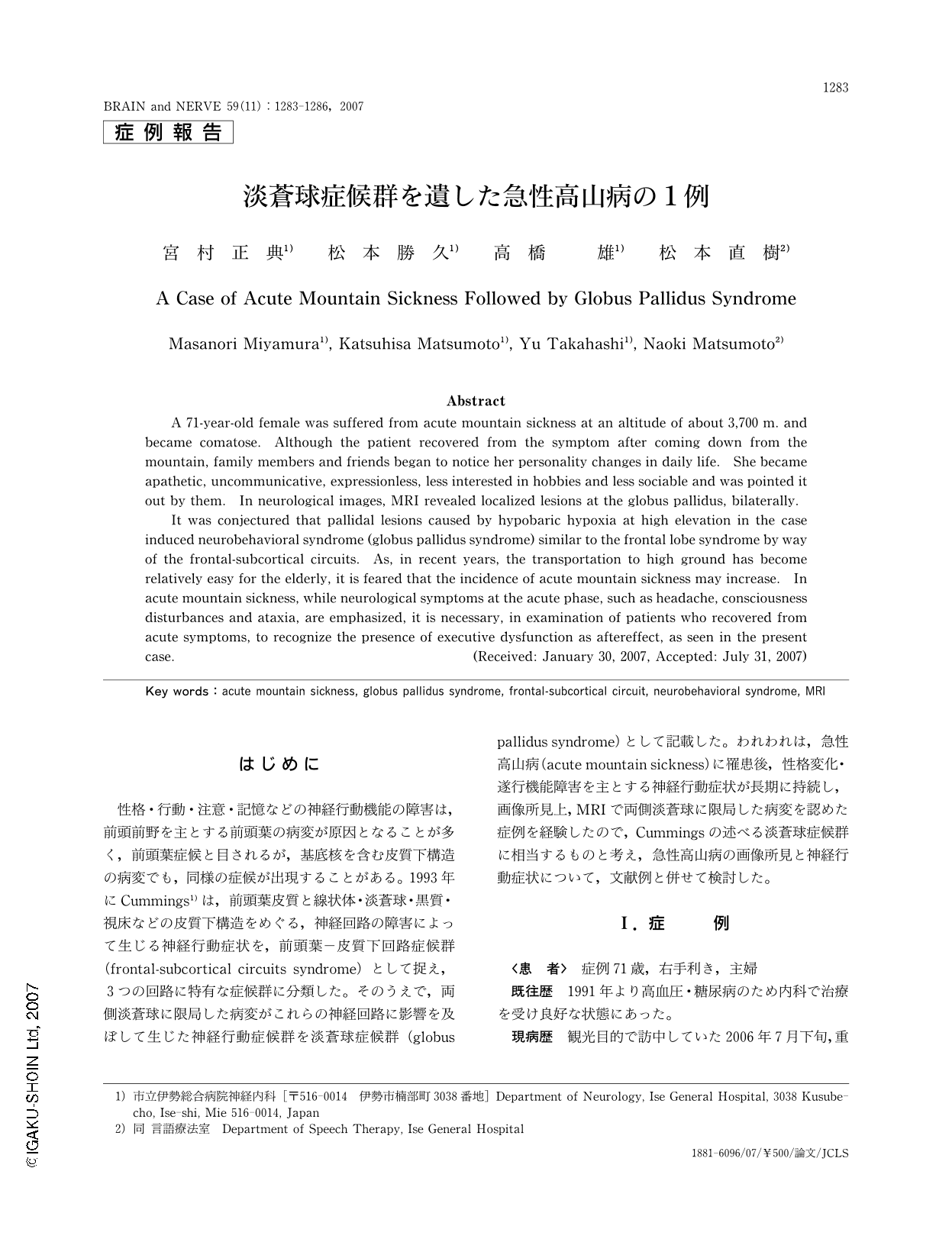Japanese
English
- 有料閲覧
- Abstract 文献概要
- 1ページ目 Look Inside
- 参考文献 Reference
はじめに
性格・行動・注意・記憶などの神経行動機能の障害は,前頭前野を主とする前頭葉の病変が原因となることが多く,前頭葉症候と目されるが,基底核を含む皮質下構造の病変でも,同様の症候が出現することがある。1993年にCummings1)は,前頭葉皮質と線状体・淡蒼球・黒質・視床などの皮質下構造をめぐる,神経回路の障害によって生じる神経行動症状を,前頭葉-皮質下回路症候群(frontal-subcortical circuits syndrome)として捉え,3つの回路に特有な症候群に分類した。そのうえで,両側淡蒼球に限局した病変がこれらの神経回路に影響を及ぼして生じた神経行動症候群を淡蒼球症候群(globus pallidus syndrome)として記載した。われわれは,急性高山病(acute mountain sickness)に罹患後,性格変化・遂行機能障害を主とする神経行動症状が長期に持続し,画像所見上,MRIで両側淡蒼球に限局した病変を認めた症例を経験したので,Cummingsの述べる淡蒼球症候群に相当するものと考え,急性高山病の画像所見と神経行動症状について,文献例と併せて検討した。
Abstract
A 71-year-old female was suffered from acute mountain sickness at an altitude of about 3,700 m. and became comatose. Although the patient recovered from the symptom after coming down from the mountain, family members and friends began to notice her personality changes in daily life. She became apathetic, uncommunicative, expressionless, less interested in hobbies and less sociable and was pointed it out by them. In neurological images, MRI revealed localized lesions at the globus pallidus, bilaterally.
It was conjectured that pallidal lesions caused by hypobaric hypoxia at high elevation in the case induced neurobehavioral syndrome (globus pallidus syndrome) similar to the frontal lobe syndrome by way of the frontal-subcortical circuits. As, in recent years, the transportation to high ground has become relatively easy for the elderly, it is feared that the incidence of acute mountain sickness may increase. In acute mountain sickness, while neurological symptoms at the acute phase, such as headache, consciousness disturbances and ataxia, are emphasized, it is necessary, in examination of patients who recovered from acute symptoms, to recognize the presence of executive dysfunction as aftereffect, as seen in the present case.

Copyright © 2007, Igaku-Shoin Ltd. All rights reserved.


